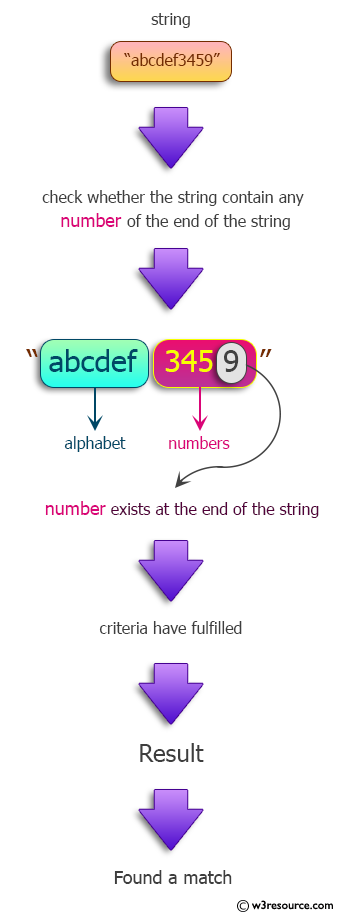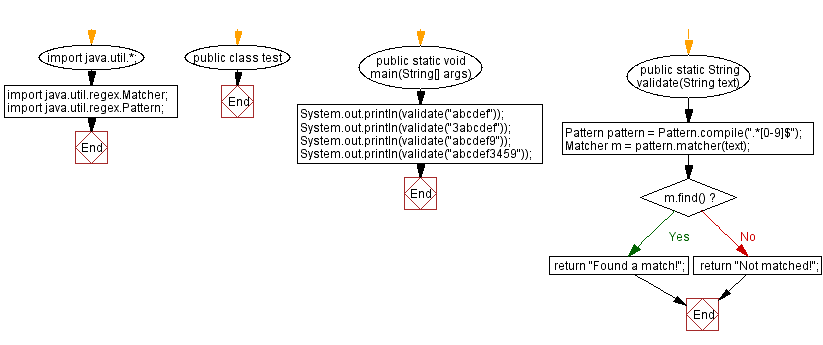Java programming Exercises: Check for a number at the end of a string
Java Regular Expression: Exercise-11 with Solution
Write a Java program to check for a number at the end of a given string.
Sample Solution:
Java Code:
import java.util.*;
import java.util.regex.Matcher;
import java.util.regex.Pattern;
public class test {
public static void main(String[] args) {
System.out.println(validate("abcdef"));
System.out.println(validate("3abcdef"));
System.out.println(validate("abcdef9"));
System.out.println(validate("abcdef3459"));
}
public static String validate(String text) {
Pattern pattern = Pattern.compile(".*[0-9]$");
Matcher m = pattern.matcher(text);
if (m.find())
return "Found a match!";
else
return "Not matched!";
}
}
Sample Output:
Not matched! Not matched! Found a match! Found a match!
Pictorial Presentation:

Flowchart :

Java Code Editor:
Contribute your code and comments through Disqus.
Previous: Remove leading zeros from a given IP address.
Next: Replace Python with Java and code with coding in a given string.What is the difficulty level of this exercise?
Test your Programming skills with w3resource's quiz.
Java: Tips of the Day
What is the best way to filter a Java Collection?
Java 8 (2014) solves this problem using streams and lambdas in one line of code:
List<Person> beerDrinkers = persons.stream()
.filter(p -> p.getAge() > 16).collect(Collectors.toList());
Use Collection#removeIf to modify the collection in place. (Notice: In this case, the predicate will remove objects who satisfy the predicate):
persons.removeIf(p -> p.getAge() <= 16);
lambdaj allows filtering collections without writing loops or inner classes:
ListbeerDrinkers = select(persons, having(on(Person.class).getAge(), greaterThan(16)));
Ref: https://bit.ly/3uwYid6
- New Content published on w3resource:
- HTML-CSS Practical: Exercises, Practice, Solution
- Java Regular Expression: Exercises, Practice, Solution
- Scala Programming Exercises, Practice, Solution
- Python Itertools exercises
- Python Numpy exercises
- Python GeoPy Package exercises
- Python Pandas exercises
- Python nltk exercises
- Python BeautifulSoup exercises
- Form Template
- Composer - PHP Package Manager
- PHPUnit - PHP Testing
- Laravel - PHP Framework
- Angular - JavaScript Framework
- Vue - JavaScript Framework
- Jest - JavaScript Testing Framework
